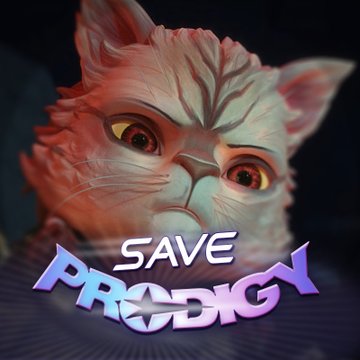

Ok, perhaps I should just power through SG season one and see if I can get into it.
BSG definitely is very late 70s American but, as a Canadian, I find Buck Rogers even worse. I don’t think I made it through two or three episodes at most.


Ok, perhaps I should just power through SG season one and see if I can get into it.
BSG definitely is very late 70s American but, as a Canadian, I find Buck Rogers even worse. I don’t think I made it through two or three episodes at most.


I would definitely put Farscape ahead of the others because it’s had such a profound impact on the creators and writers of other space opera shows since its run, including newer Star Trek.
Babylon 5 is very good if one skips all but the ‘must see episodes’ of season one. The original principal actor suffered a major health crisis between the pilot and the first season. His wooden, not present performance, really damages that season but the other actors and show is very much worth the effort to watch around that.
I would also throw some 1970s classics in to the mix if OP enjoyed TOS. Space 1999 is definitely worth a watch, especially season one. BSG, the original, is a fun ride.
For a show that’s ambitious and appallingly bad all at once, but that features some classic Trek actors and writers, ‘The Starlost’ is a hoot. It really deserves to be purposed for memes.
I can honestly say that I have tried to get into SG1 several times but it never sticks. (I really liked the movie though.). I started again recently and drifted away in the middle of season one.


Uhm, didn’t physicist David Keith of Harvard, better know for his work on carbon capture, do something like this in the early 1990s in building the early atom interferometers?
He didn’t pursue the development as the applications were military at that time but my recollection was that he created a lab bench sized generator.


But Rick Berman was still hassling Terry Farrell to get her to get breast enlargements.
Which is one of the reasons she left the show.


It’s my favourite season just for that.


Most of the shows with ‘teenagers’ have casts in their late twenties or thirties.


It depends on the populations.
Steppe populations from modern Ukraine easy through to the Urals lived mainly on meat and dairy 5000 years ago (even if they didn’t yet have the lactose tolerance adaptation).


At a certain point, I realized that from another perspective, the big divide seems to be between those who see continuous distributions as just an abstraction of a world that is inherently finite vs those who see finite steps as the approximation of an inherently continuous and infinitely divisible reality.
Since I’m someone who sees math as a way to tell internally-consistent stories that may or may not represent reality, I tend to have a certain exasperation with what seems to be the need of most engineers to anchor everything in Euclidean topography.
But it’s my spouse who had to help our kids with high school math. A parent who thinks non Euclidean geometry is fun is not helpful at that point.


The reason WHO frames common risk factors and common chronic diseases is because persons with these risks, conditions and diseases often end up with more than one of these diseases.
e.g., WHO now considers obesity a disease in itself, but obesity is also a biological risk factor for cancer and diabetes.
There are a lot of interrelationships in the risks.
More, with these conditions, they are also more vulnerable to infectious diseases.
It’s important though to keep in mind that, as I note in another reply, these kinds of studies aren’t just about informing individuals’ choices.
They’re not about ‘blaming’ or ‘shaming’ individuals choices.
They are about understanding what are the underlying determinants of health and risk factors that are shaping health outcomes.
Back to the study in question, and the OP’s remark that they were surprised that people were eating that much processed meat daily…
If the protein sources that are most available and affordable are the most unhealthy, preprocessed ones, then consumers will buy and consume more of these than healthier ones.
And their preferences and consumption habits will be shaped by these experiences.
And that will affect overall health and life expectancy of the population.


I would argue that this is missing the point - and so, in fact, is the article reporting on the study.
What is important to keep in mind is that the benefit of this research is not primarily about ‘telling’ or ‘informing’ individuals so that they can make different food consumption decisions.
It’s more about how food environments are shaped to encourage healthy or unhealthy choices.
If eating that much processed meat daily or weekly increases cancer risks, what’s driving or nudging people towards that.
Is it barriers to availability, accessibility or affordability of healthier and palatable choices?


My point is that raising risks of getting hit by a car, or other accidental causes of injury and death beyond the individual’s control, is a deflection.
Cancer is the leading cause of death in Canada.
Full stop.
No one single risk factor is responsible for that. Building the evidence base to be able to both inform individual behaviour but also to inform food safety regulations is important.


Cancer is the leading cause of premature mortality and morbidity (death and disability) in Canada.
So, an accumulation of small risks, and avoidance of risks, have significant benefits at both the individual and population levels.
The general population needs to be aware that unhealthy eating is impacting their lives and quality of life.
Let’s stick to the peer reviewed science and evidence consensus.
WHO established the four behavioural common risk factors for the four major chronic noncommunicable diseases decades ago.
The kind of research synthesis in this article is about continuing to build the evidence on relative and absolute risks, and in some cases look at how these differences impact different populations more or less due to intersecting determinants.
Common risk factors
Major chronic noncommunicable diseases
The show clearly shows Murderbot as being ACE and uncomfortable with the sexual and gendered reactions of others towards them — which is as important in my view the outward and physical apparent gender.
And yet, you’ll see many people posting elsewhere on social media that it shouldn’t be relevant.
Can’t imagine trying to share a life with someone who didn’t share my values, but there seems to be a contingent that think that other things should be more important.


Ah, the true predecessors of bumpy-forehead aliens!


News flash: the original TOS gold shirts were green but the film processing didn’t give us that. Somehow that specific alternate tunic fabric came out on film closer to the actual fabric colour.


I would argue that a lot of the computational based problem solving , from middle school through early undergraduate years, focused on topics historically oriented to boys’ interests, aren’t a good measure of innate math talent either.
But those have historically left a lot of female students behind.
Male or female, most students are really looking to get through math requirements with plug-and-chug replication of algorithms to get to an answer - not genuine problem solving or abstraction. However, being able to reproduce an answer on a very slightly different problem, or just one with different numbers to plug in, does very little towards using mathematical as a means to model problems independently and find solutions.


That one was a budget shortfall actually.
Prof. Sam Lawler, cited in the article as a critic/skeptic, is very active on Mastodon @sundogplanets@mastodon.social and interesting to follow.